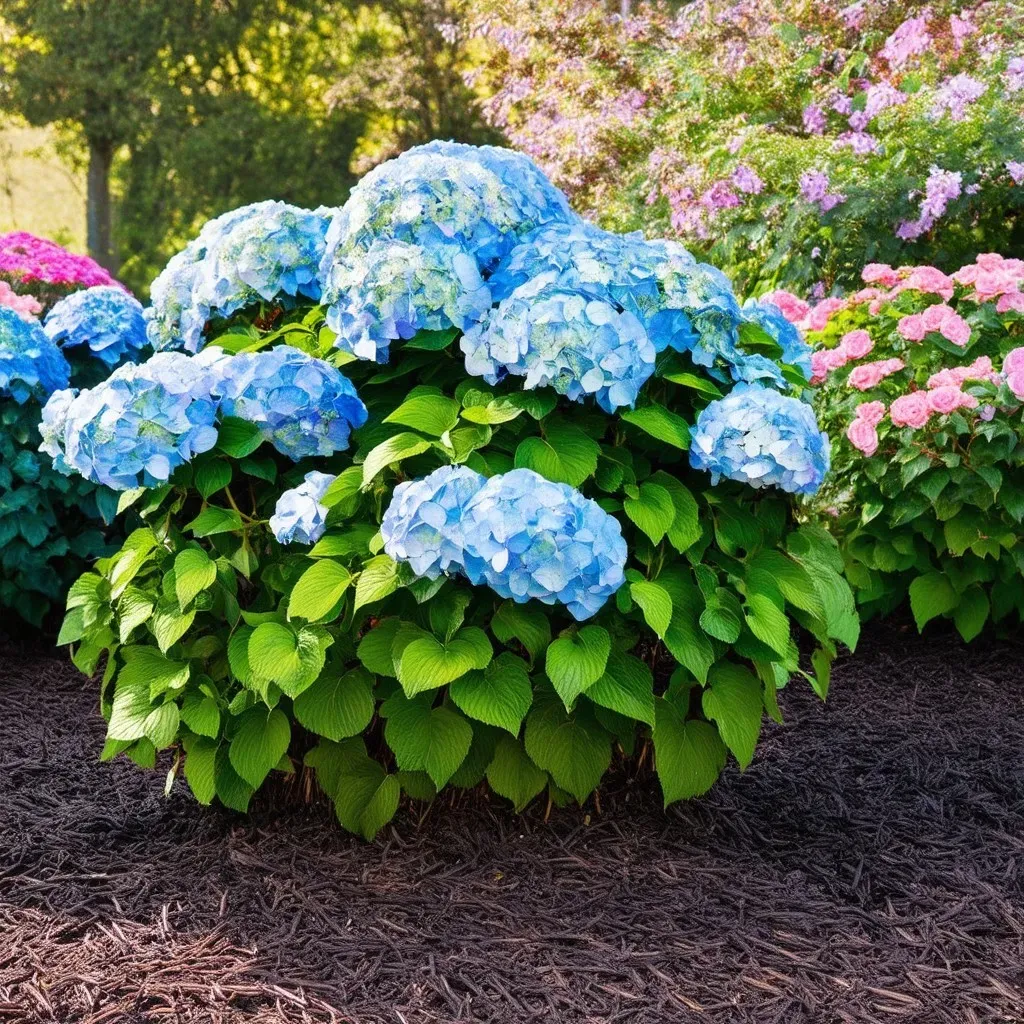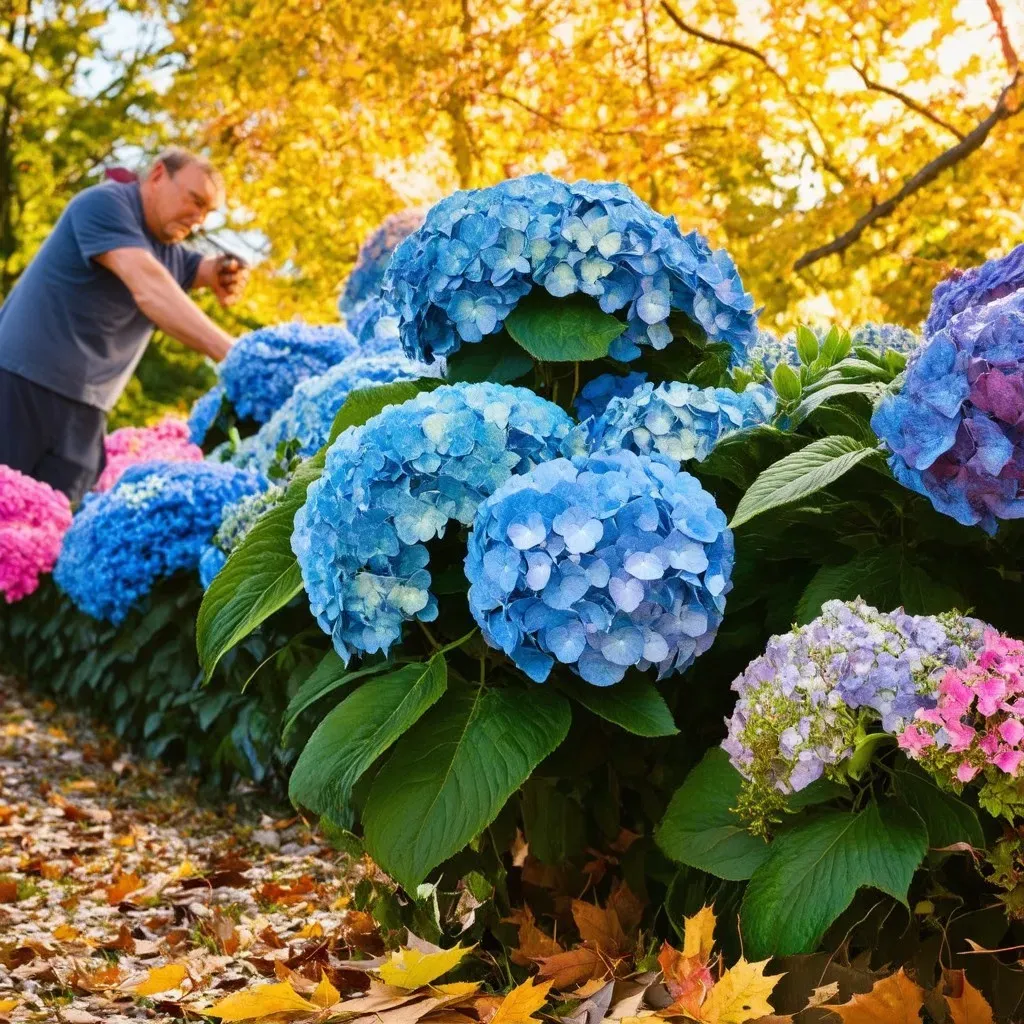hydrangea winter care is critical for maintaining the health and vibrancy of these beloved shrubs through the harsh winter months. Knowing how to winterize hydrangeas is key to ensuring they bloom beautifully come spring. Whether they are planted in the ground or kept in pots, hydrangeas need special attention during the colder months to survive harsh conditions and emerge healthy and ready to thrive.
What Do Hydrangeas Look Like in Winter?
During winter, hydrangeas undergo significant changes. Many varieties will lose their leaves, revealing their woody structure beneath. The stems may seem bare, and the flower heads may dry up, but this does not mean the plant is dead; rather, it’s a natural part of the plant’s cycle. Some types, like hydrangea macrophylla, may retain their dried blooms, adding a rustic texture to your winter landscape.
| Hydrangea Type | Winter Appearance | Hardiness Zones |
|---|---|---|
| Hydrangea macrophylla | Dried flowers, bare stems | 5-9 |
| Hydrangea paniculata | Bare stems, possible dried blooms | 3-8 |
| Hydrangea arborescens | Mostly bare, sturdy stems | 3-9 |
| Hydrangea quercifolia | Leaves may retain but brown | 5-9 |

Hydrangea Winter Protection
Assessing Your Variety’s Hardiness
Before you start winterizing, it’s important to identify your hydrangea’s type and its hardiness zone. Most varieties are cold-hardy, but specific care will depend on the kind you have. For instance:
- Hydrangea macrophylla (Mophead): Requires more protection, especially in colder climates.
- Hydrangea paniculata (Panicled): Very hardy, with robust blooms.
Understanding your plant’s needs will guide your approach to winter care.
Preparing Hydrangeas for Winter
Step-by-step Preparation:
-
Water Thoroughly: A well-hydrated plant is better able to withstand the cold. Water your hydrangeas deeply a few days before the first frost.
-
Mulching: Apply a thick layer (3–4 inches) of organic mulch, such as shredded bark or wood chips, around the base. This will help regulate soil temperature and prevent freeze-thaw cycles that can damage roots.
-
Pruning: Depending on the variety, prune dead stems to encourage new growth when spring arrives. For types that bloom on old wood, avoid heavy pruning.
-
Wrap the Plants: For especially tender varieties, wrap the branches loosely with burlap or protective fabric to shield them from extreme cold and wind. Tie the material gently to avoid damaging stems.
-
Covering with Leaves or Straw: For additional insulation, consider covering hydrangeas with a mound of straw or leaves, but ensure this is removed once the temperatures rise in spring.
-
Pot Management: If your hydrangeas are in pots, consider moving them to a garage or shed for protection against frost. Alternatively, wrap the pots with bubble wrap or burlap to insulate them.

Reference Video
FAQ on Hydrangea Winter Care
Do Hydrangeas Lose Their Leaves in Winter?
Yes, most hydrangea varieties lose their leaves in winter. This is a normal process, especially for deciduous types. However, some evergreen types may retain foliage year-round.
Do Hydrangeas Die in Winter?
Not if properly cared for! Hydrangeas are quite hardy, but without adequate protection from cold and frost, they can suffer damage. Follow these care tips to help ensure their survival.
When Should You Cover Hydrangeas for Winter?
Aim to cover hydrangeas just before the first hard frost, which typically occurs in late fall. Timing the protection properly is crucial.
How to Protect Hydrangeas in Winter?
Utilize mulching, wrapping, and sufficient watering. Check the forecast and be proactive about protecting them from upcoming cold snaps.
What Does a Hydrangea Look Like in Winter?
In winter, they display dried flower heads and bare stems. However, the actual structure can still provide interest in winter gardens.
Hydrangea Care in Winter: Additional Tips
1. Monitor Weather Conditions
Stay vigilant about sudden temperature drops or late frosts, as these can damage your hydrangeas if they are not protected.
2. Fertilization
Avoid fertilizing in late fall; this can stimulate new growth that is vulnerable to frost.
3. Be Mindful of Pests
Inspect your plants for pests like aphids or spider mites before winter, as they can threaten the plant’s health.
4. Utilize Fertilizer in Late Summer
Some gardeners recommend using a slow-release fertilizer in late summer to prepare hydrangeas for the winter months, as this can provide nutrients that support the plant during dormancy.
5. Remove Dead Blooms in Early Spring
Once the weather begins to warm, trim away dead blooms to promote healthy new growth.
6. Keep Records
Keep a gardening journal detailing your Hydrangea Care, changes in the weather, and their responses. This will help you refine your winter care techniques for future seasons.

For extensive knowledge about our fascinating hydrangeas, consider checking resources like the American Hydrangea Society.
By following these essential hydrangea winter care tips, you can ensure that your plants are healthy and ready to burst into bloom when spring arrives. A little proactive attention goes a long way in preserving the beauty of these beloved shrubs for the warmer months ahead.


